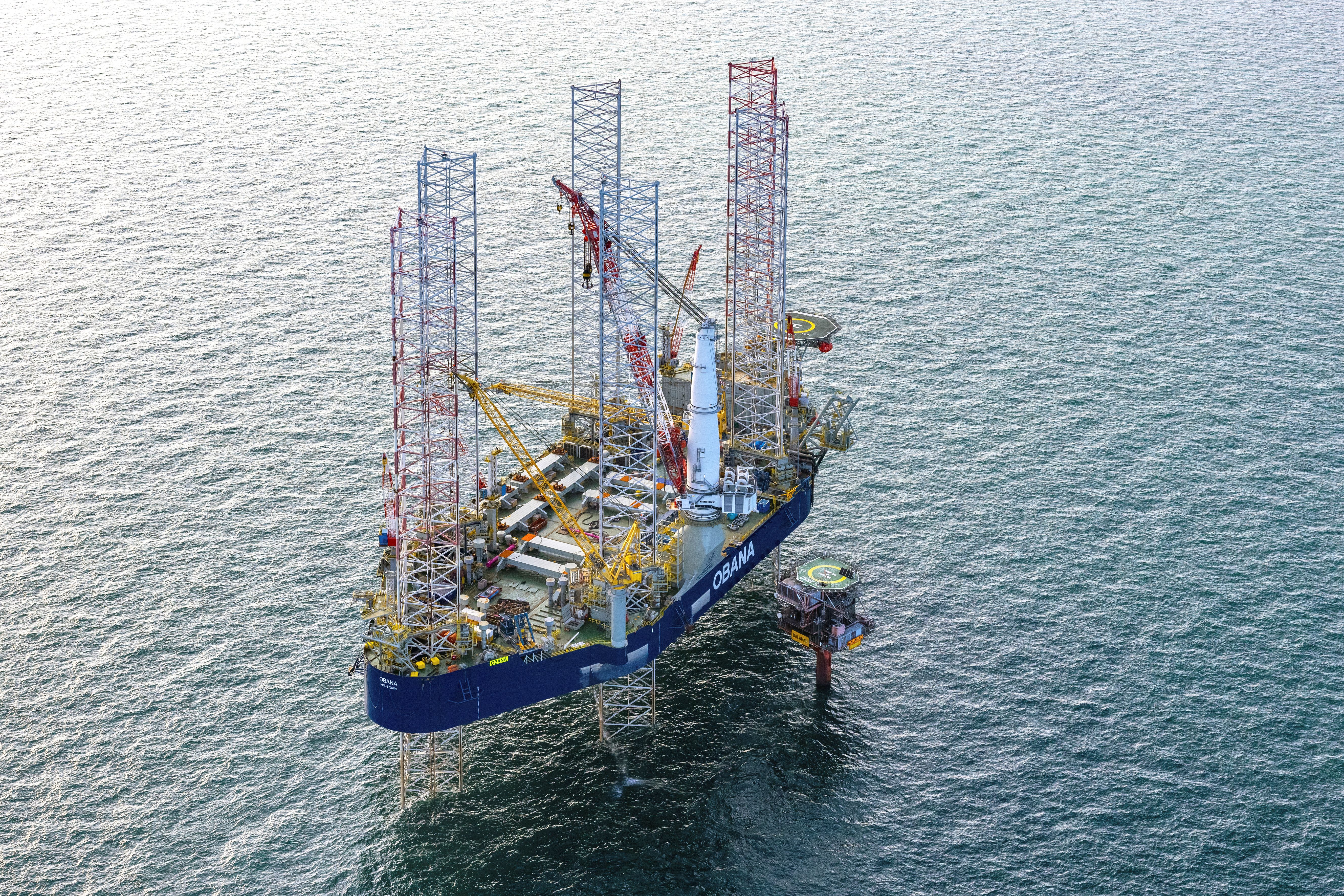Petrodec’s newly constructed heavy elevate jackup vessel, named “Obana,” has begun decommissioning work within the Southern North Sea for Perenco UK (PUK)’s Galahad platform. Obana is initially being deployed on Block 48/12a engaged on the Galahad platform, the place this system contains topside and jacket elimination. After Galahad, Obana will transfer to the Amethyst area for the elimination of the C1D, A2D and B1D jackets, anticipated to be accomplished and offloaded in The Netherlands later this 12 months.
Obana is the world’s largest self-elevating, heavy elevate jackup vessel of its kind. Following the completion of ultimate trials, together with its first offshore full platform elevate, Obana has now began its business operations with PUK, earlier than shifting onto contracts with different operators.
Lately accomplished on the Damen Shipyard in Rotterdam, the six-legged Obana includes 85% recycled metal and was engineered by merging two repurposed former drilling rigs, the Brage and Gabrus, with a newbuilt mid-section which was constructed in Dubai. Obana was constructed particularly to deal with advanced and heavy decommissioning offshore work, in water depths of as much as 65 m. It’s geared up with a 2,000-tonne crane and has 3,800m² and as much as 12,000 tonnes of deck capability geared up with curler programs able to rearranging elements on deck, in order that a number of modules will be eliminated in a single marketing campaign. The design was a collaboration between Petrodec, Dixstone’s specialist decommissioning arm, and Singapore-based Seatrium Offshore Know-how.
“The deployment of the state-of-the-art Petrodec Obana heavy elevate jackup vessel to Galahad, after which to Amethyst, are additional milestones in our ongoing decommissioning program,” mentioned UK SNS Managing Director, Jo White. “Having already dismantled 26 offshore buildings, we’re dedicated to persevering with our monitor report of efficient and environment friendly decommissioning, exercising diligent stewardship of one of many largest networks of owned and operated fuel belongings within the UK North Sea.”

